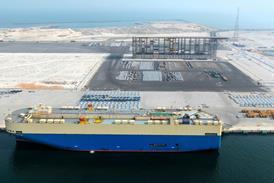With the Gaza ceasefire appearing to hold and Yemen’s Houthi rebels signalling a halt to attacks on merchant vessels, the discussion has begun to tilt towards a measured, albeit cautious, return of commercial traffic to the Red Sea.
The deteriorated regional security situation has forced the vast majority of merchant vessels to disregard the Suez Canal as a viable maritime route, with operators instead taking the longer voyage around the Cape of Good Hope.
While a handful of merchant ships have continued to transit the Suez, the mood appears to be shifting. On November 25, the Suez Canal Authority issued a press release suggesting that a number of major container shipping lines could return to the waterway, gradually, as early as December 2025.
Multipurpose and heavy lift ship owners and operators are mulling similar decisions. AAL Shipping, for instance, decided to reroute its owned fleet owing to the security situation. This diversion has extended AAL Shipping’s voyage times by 15 to 25 days, increasing tonne miles sailed and operational costs.

“We are closely monitoring several factors: security intelligence, insurer guidance and evolving underwriting conditions, as well as commercial pressure from customers. We continue to assess the situation in real time, and once security protocols and market conditions permit, we intend to resume AAL Shipping tonnage on the Red Sea–Suez route to meet our customers’ needs,” said John Pittalis, head of marketing and communications at the carrier.
He said that, naturally, the carrier would like to eliminate the increased financial and time burdens of sailing around the Cape, although the demand and needs of its customers and the safety of its crew and cargo remain a priority. “In that respect we will continue to reroute our services until safe and commercially viable to do so.”
He pointed out that during periods of severe instability in the Red Sea, war-risk premium rates reached 1-2 percent of a ship’s value, significantly higher than the 0.3 percent seen in calmer times. These premiums have eased recently in light of reduced Houthi activity in the Red Sea.
Regarding a reversion, it is likely to be staggered with any return calibrated around risk, insurance, and customer demand – rather than an immediate “flip the switch” swing. “Across the supply chains AAL serve, our partners are clear that safety and security come first. Although Suez routings would be desirable – saving in time and cost – there is no appetite from the market to take risks,” Pittalis added.
















